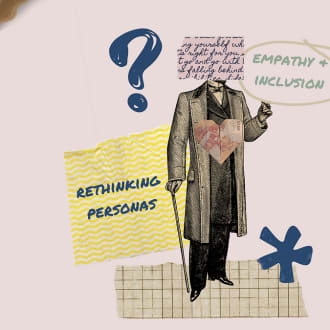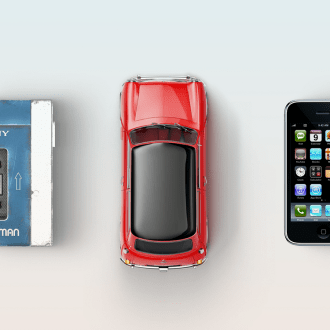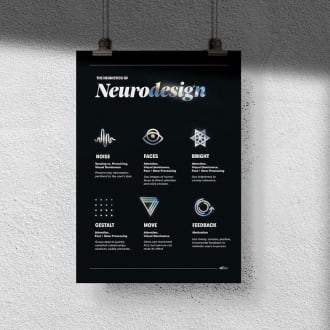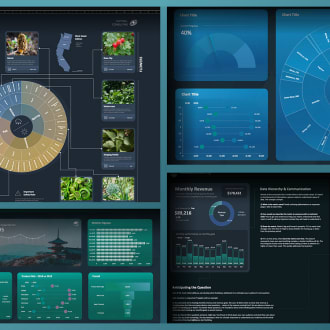The Best of UX Collective
20+ most popular UX Collective articles, as voted by our community.
New this Week
These are fresh off the press.
Steering the future: a new vision for car UX
A few words and ideas on how to make the user experience within car interfaces better.
Trending
These are currently making the rounds on Refind.
The GenAI Compass: a UX framework to design generative AI experiences
Implementing human-centric design thinking to GenAI.
Beyond numbers: Proving the value of design(ers)
Data is overshadowing emotion. Does it have to?
Rethinking Personas: Empathy and Inclusion in UX Design
“User-centred” it’s a buzzword but I like it. The emphasis is on setting aside personal biases and listening to the users — a principle…
UX Collective on Accessibility
Designing for accessibility is not that hard
Seven easy-to-implement guidelines to design a more accessible web ❤️
Another death knell for accessibility on Twitter
A case study of how Twitter’s proposed API changes will further undermine accessibility for its users
UX Collective on CX
How Airbnb Proved That Storytelling is the Most Important Skill in Design
The company’s biggest breakthrough innovations start with text.
How Netflix does A/B Testing — uxdesign.cc
Have you ever wondered why Netflix has such a great streaming experience?
UX Collective on Design
Design for AI: What should people who design AI know?
It’s 2022 and we are in the early days of artificial intelligence design.
UX Collective on Design Systems
Building a design system — where to start?
Colour, space and typography — these elements are the building blocks for a solid design system. But, first things first…
Building a design system — where to start? (Part 3 — Size and spacing)
Colour, space and typography — these elements are the building blocks for a solid design system. Let’s take a look at size and spacing…
UX Collective on Design Thinking
Why Design Thinking is failing and what we should be doing differently
I have and always will be an avid supporter of the design thinking methodology. I have held talks and workshops about Design Thinking &…
Systems thinking: the key to process improvements
“Learn how to see. Realize that everything connects to everything else.”
UX Collective on Product Design
Research vs Vision: the origin story of Sony Walkman, Mini Cooper, and the iPhone
It’s always interesting to watch how companies approach the building of their new products. During the market research phase, companies…
Psychological principles every product designer should know
Psychology is a crucial element in designing the right kind of systems, interfaces and experiences for your users/customers.
«Anchoring bias has a huge impact on negotiations and the pricing of the products and influences how much the customer is willing to pay.»
UX Collective on Prototyping
3 rapid prototyping exercises to improve your UX skills
This one quote from Hustle, really stuck to me:
4 myths busted about high-fidelity prototyping
Busting some key misconceptions about the world of hi-fi prototyping from a perspective of a designer.
UX Collective on UX
The heuristics of Neurodesign
A guide to design for the brain with intention and results.
«Neurodesign is an emerging field of design practice that accounts for how our brains are wired to create designs that promote simplicity, emote joy, and drive action»
The State of UX in 2017
Here’s our take on looking at the past, understanding the present, and anticipating some of the UX Trends in 2017.
UX Collective on Visual Design
The State of UX in 2019
From the tools we'll use, to our process, to the behaviors that will change the way we design — here's a list of what to expect for User Experience (UX) Design in the next year.
«reshape the reality aroun»
Popular
These are some all-time favorites with Refind users.
Designing teachable products
Inadequate consideration of how products are taught to users can lead to sub-optimal product designs.
«Products should be intuitive to use, but also easy to teach. While those might seem like overlapping goals, they are distinct from one another.»
Levels of knowledge and levels of designs, the growth path of a designer
Translating theory into real experiences and embracing other types of design are clear signs of your evolution as a designer.
«Ted talk about the importance of knowledge and experiences in candidates by Regina Hartley.»
Designing for “delight” is dead
The ultimate goal of product design has to be well-being — not delight.
Excel is your most overlooked design tool
A designer’s perspective on the world’s #1 spreadsheet tool — how to build infographics, dashboards, presentations & more
Challenges of multi-brand design systems
Your management needs to know about complexity, limitations, and time before you start
What is Refind?
Every day Refind picks the most relevant links from around the web for you. is one of more than 10k sources we monitor.
How does Refind curate?
It’s a mix of human and algorithmic curation, following a number of steps:
- We monitor 10k+ sources and 1k+ thought leaders on hundreds of topics—publications, blogs, news sites, newsletters, Substack, Medium, Twitter, etc.
- In addition, our users save links from around the web using our Save buttons and our extensions.
- Our algorithm processes 100k+ new links every day and uses external signals to find the most relevant ones, focusing on timeless pieces.
- Our community of active users gets the most relevant links every day, tailored to their interests. They provide feedback via implicit and explicit signals: open, read, listen, share, mark as read, read later, «More/less like this», etc.
- Our algorithm uses these internal signals to refine the selection.
- In addition, we have expert curators who manually curate niche topics.
The result: lists of the best and most useful articles on hundreds of topics.
How does Refind detect «timeless» pieces?
We focus on pieces with long shelf-lives—not news. We determine «timelessness» via a number of metrics, for example, the consumption pattern of links over time.
How many sources does Refind monitor?
We monitor 10k+ content sources on hundreds of topics—publications, blogs, news sites, newsletters, Substack, Medium, Twitter, etc.
Can I submit a link?
Indirectly, by using Refind and saving links from outside (e.g., via our extensions).
How can I report a problem?
When you’re logged-in, you can flag any link via the «More» (...) menu. You can also report problems via email to hello@refind.com
Who uses Refind?
450k+ smart people start their day with Refind. To learn something new. To get inspired. To move forward. Our apps have a 4.9/5 rating.
Is Refind free?
Yes, it’s free!
How can I sign up?
Head over to our homepage and sign up by email or with your Twitter or Google account.




























